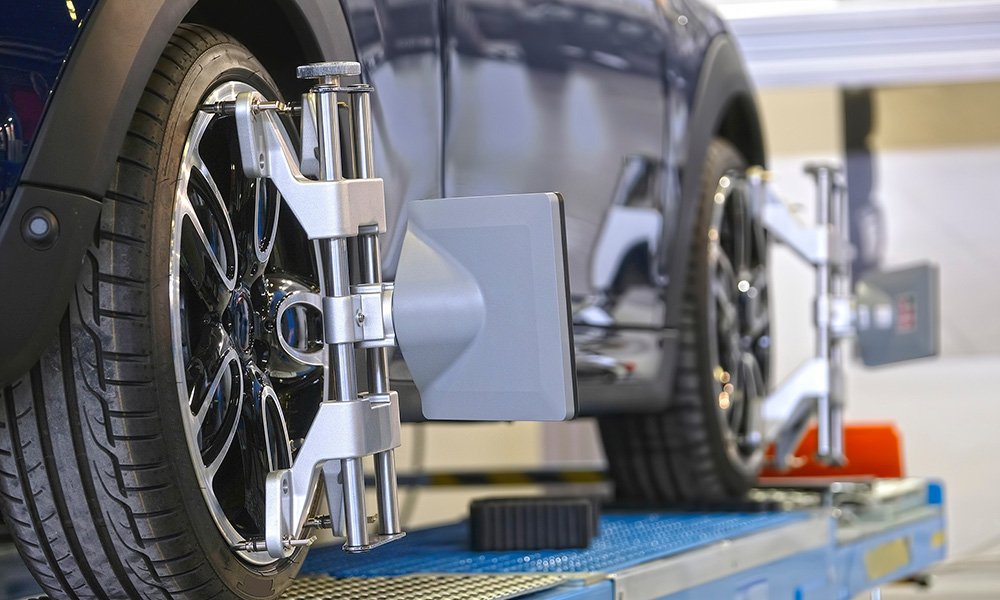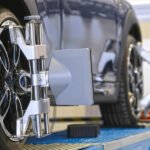

All About Wheel Balancing
Ever felt a vibration coming from your steering wheel at highway speeds? This shaking sensation is a telltale sign your car needs wheel balancing. Wheel balancing is the process of ensuring equal weight distribution throughout a tire and wheel assembly. This creates a smoother ride, improves fuel efficiency, and extends tire life.
A History and Evolution of Wheel Balancing
In the automotive history, the genesis of wheel balancing stands as a crucial milestone. While ancient civilizations tinkered with the equilibrium of chariot wheels, it was the dawn of the 20th century that witnessed the birth of modern wheel balancing. With the advent of automobiles and the surge in driving velocities, the imperative of balanced wheels became glaringly apparent. Gustav Bohne, a visionary German engineer, etched his name in the annals of innovation by crafting the inaugural commercial wheel balancing apparatus in the 1920s. His brainchild heralded a new era in car maintenance, bestowing upon drivers the gift of smoother rides and enhanced operational efficiency.
Fast forward to the present day, and Bohne’s legacy endures as a testament to the timeless pursuit of automotive excellence. As wheels continue to spin and vehicles traverse vast expanses of asphalt, the significance of balanced wheels remains undiminished. From bustling city streets to winding country roads, Bohne’s invention serves as an unsung hero, quietly ensuring optimal performance and driving comfort for motorists worldwide. So, the next time you embark on a journey, spare a thought for Gustav Bohne and the indelible mark he left on the wheels of progress.
The Balancing Act: The Mechanics Behind a Balanced Wheel
In the intricate dance of a vehicle’s performance, the tire and rim take center stage as the key components in maintaining balance. Even the slightest weight irregularities within these parts can disrupt the harmony of the entire wheel system. To rectify this issue, wheel balancing machines come into play, offering both static and dynamic solutions. Static balancers meticulously detect up-and-down weight imbalances, while dynamic counterparts go a step further, identifying imbalances in both vertical and lateral planes for a more thorough assessment.
Once the wheel assembly is placed upon the machine, it undergoes a spinning motion, revealing areas where weight adjustments are needed. This diagnostic process lays the groundwork for precision balancing. Balancing weights, typically crafted from lead or steel, are then strategically affixed to the rim to counterbalance any heavier spots, achieving optimal weight distribution. Through this meticulous procedure, the wheels regain their equilibrium, ensuring a smoother and safer ride for drivers navigating the twists and turns of the road ahead.
Difference Between wheel balancing and wheel Alignment
Wheel balancing and wheel alignment are both essential aspects of vehicle maintenance, but they serve distinct purposes. Wheel balancing primarily addresses the distribution of weight around the wheel and tire assembly. When a wheel is out of balance, it means that there are uneven weight distributions, leading to vibrations and potential issues like uneven tire wear. To rectify this, wheel balancing involves using a specialized machine to identify these weight disparities and adding counterweights to the rim to achieve proper balance.
On the other hand, wheel alignment focuses on the angle and orientation of the wheels concerning each other and the vehicle’s frame. Proper alignment ensures that the wheels are perpendicular to the ground and parallel to each other, optimizing vehicle handling, tire longevity, and fuel efficiency. Misaligned wheels can result in uneven tire wear, steering pull, and compromised vehicle stability.
In summary, wheel balancing corrects weight distribution issues within the wheel and tire assembly, while wheel alignment adjusts the angles and orientation of the wheels to optimize vehicle performance and tire longevity. Both are crucial for maintaining a safe and smooth driving experience.

Maintaining the Balance and Keeping Your Wheels in Top Shape
Keeping your wheels in optimal balance is paramount for a smooth and safe driving experience, and regular servicing is the key to achieving this. Industry experts often advise scheduling wheel balancing every 5,000 to 7,000 miles, or at least once annually, to maintain peak performance. However, certain circumstances may warrant more frequent attention. Instances such as encountering potholes, suffering curb rash, or experiencing uneven tire wear can throw off wheel balance, necessitating more immediate intervention.
It’s crucial to stay vigilant for signs that your vehicle may be due for balancing. If you notice a vibrating steering wheel, uneven tire tread wear, or a noticeably bumpy ride, these are clear indicators that your wheels may be out of balance and require prompt attention. By staying proactive and addressing balance issues promptly, you can ensure that your wheels maintain their equilibrium, promoting both safety and driving comfort on the road ahead.
Effects of Neglecting wheel balancing
Leaving a car without proper wheel balancing can lead to various detrimental effects on both the vehicle and the driving experience. Initially, unbalanced wheels can cause noticeable vibrations, particularly at higher speeds, which not only compromises driving comfort but also indicates potential wear and tear on suspension components. Moreover, the uneven distribution of weight can result in uneven tire wear, reducing tire lifespan and necessitating premature replacements. Over time, neglected wheel balancing can escalate into more severe issues, including damage to suspension and steering components, decreased fuel efficiency due to increased rolling resistance, and compromised overall safety as handling and stability are compromised. Therefore, regular wheel balancing is essential to maintain optimal vehicle performance, safety, and longevity.
Conclusion: A Smooth Ride is a Safe Ride
Wheel balancing is a crucial aspect of preventative car maintenance. By ensuring balanced wheels, you can experience a smoother ride, save money on fuel and tires, and promote the overall health of your car. Schedule regular balancing appointments and address any signs of imbalance promptly. Remember, a balanced car is a happy, and more importantly, safe car.
Add a comment Cancel reply
Categories
- Car Gadgets (17)
- Car News (33)
- Car Reviews (43)
- Car Wars (7)
- Mechanicals (32)
- Uncategorized (2)
Recent Posts
About us

Popular Tags
Related posts


Essential Car Repair Skills Every Driver Should Know

Unlocking the Potential of Ethanol-Powered Cars








